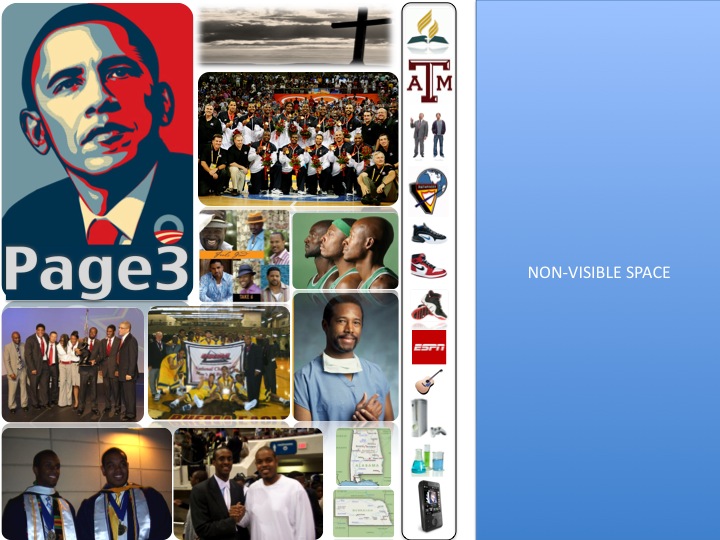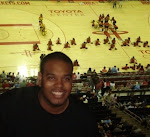
From all the technical jargon, it seems to be liquid based. Very intersting read if you have the time to scan through it.
A fluid-filled structure, such as a bladder, is disclosed. The bladder has a first surface and an opposite second surface that are peripherally joined to define various edges. The bladder encloses a fluid between the first surface and the second surface. A portion of the edges may have a concave configuration, or the edges may have both concave and convex configurations. A shape of the bladder may be a tessellation pattern so that a plurality of the bladder may be efficiently.
Application number: 12/016,015
Publication number:
Filing date: Jan 17, 2008
Inventors: Vincent F. White, Jennie R. Caudle, Stuart C. Forstrom
Assignees: NIKE, INC.
U.S. Classification
036029000; 03603500B; 036045000
1. An article of footwear comprising an upper and a sole structure secured to the upper, at least one of the upper and the sole structure incorporating a bladder that includes a first surface and an opposite second surface that are peripherally joined to define three first edges and three second edges, and the bladder enclosing a fluid between the first surface and the second surface, the first edges alternating with the second edges, and the second edges having a concave configuration. 2. The article of footwear recited in claim 1, wherein the bladder is encapsulated within a polymer foam material of the sole structure. 3. The article of footwear recited in claim 1, wherein the bladder has a hexagonal configuration. 4. The article of footwear recited in claim 1, wherein the first edges have a convex configuration. 5. The article of footwear recited in claim 1, wherein at least one of the second edges has a first indentation and a second indentation, the second indentation extending closer to a central portion of the bladder than the first indentation. 6. The article of footwear recited in claim 1, wherein the bladder includes a bond between the first surface and the second surface, the bond being spaced inward from one of the first edges and the second edges, and the bond defining a channel between the bond and the one of the first edges and the second edges, the channel extending substantially parallel to the one of the first edges and the second edges. 7. The article of footwear recited in claim 6, wherein the bladder includes an inflation area in fluid communication with the channel, the inflation area providing a zone for inserting the fluid into the bladder, and the inflation area being sealed to seal the fluid within the bladder. 8. The article of footwear recited in claim 6, wherein the bond is bisected to separate the channel from a central portion of the bladder. 9. The article of footwear recited in claim 1, wherein the bladder includes at least one tab extending from one of the first edges. 10. The article of footwear recited in claim 9, wherein the tab is utilized to locate the bladder within the footwear. 11. The article of footwear recited in claim 1, wherein the first surface and the second surface are devoid of internal connections in a central portion of the bladder. 12. The article of footwear recited in claim 1, wherein the fluid is pressurized. 13. An article of footwear comprising an upper and a sole structure secured to the upper, at least one of the upper and the sole structure incorporating a bladder that includes a first surface and an opposite second surface that are peripherally joined to define three first edges and three second edges, the first surface and the second surface being devoid of internal connections in a central portion of the bladder, and the bladder enclosing a fluid between the first surface and the second surface, the first edges having a convex configuration, and the second edges having a concave configuration. 14. The article of footwear recited in claim 13, wherein the bladder is encapsulated within a polymer foam material of the sole structure. 15. The article of footwear recited in claim 13, wherein the bladder has a hexagonal configuration. 16. The article of footwear recited in claim 13, wherein the first edges alternate with the second edges. 17. The article of footwear recited in claim 13, wherein the bladder includes a bond between the first surface and the second surface, the bond being spaced inward from one of the first edges and the second edges, and the bond defining a channel between the bond and the one of the first edges and the second edges, the channel extending substantially parallel to the one of the first edges and the second edges. 18. The article of footwear recited in claim 17, wherein the bladder includes an inflation area in fluid communication with the channel, the inflation area providing a zone for inserting the fluid into the bladder, and the inflation area being sealed to seal the fluid within the bladder. 19. The article of footwear recited in claim 17, wherein the bond is bisected to separate the channel from a central portion of the bladder. 20. An article comprising a plurality of bladders that enclose a pressurized fluid, each of the bladders having a tessellation configuration wherein edges of a first bladder are positioned adjacent to edges of a plurality of second bladders, and the edges of the first bladder have a shape that mates with the edges of the plurality of the second bladders. 21. The article recited in claim 20, wherein the edges of the first bladder include a convex edge and the edges of the plurality of the second bladders include a concave edge, the convex edge being positioned adjacent and joined to the convex edge. 22. The article recited in claim 21, wherein a tab protrudes from the convex edge, and the tab extends into a corresponding indentation in the concave edge. 23. The article recited in claim 20, wherein the first bladder and the second bladders are substantially identical to each other. 24. The article recited in claim 20, wherein the first bladder includes a bond that is spaced inward from a periphery of the first bladder, the bond defining a channel between the bond and the periphery, and the channel extending substantially parallel to the periphery. 25. The article recited in claim 24, wherein the first bladder includes an inflation area in fluid communication with the channel, the inflation area providing a zone for inserting the fluid into the first bladder, and the inflation area being sealed to seal the fluid within the first bladder. 26. The article recited in claim 24, wherein the bond is bisected to separate the channel from a central portion of the bladder. 27. A bladder comprising: 28. The bladder recited in claim 27, wherein each of the bond and the channel extend substantially parallel to the edge 29. The bladder recited in claim 27, wherein the inflation area is centrally-located with respect to the channel. 30. The bladder recited in claim 27, wherein the bond is bisected to separate the channel from a remainder of the bladder. 31. The bladder recited in claim 27, wherein the channel extends from opposite sides of the inflation area. 32. The bladder recited in claim 27, wherein the edge has a concave configuration, and the bond and the channel extend substantially parallel to the edge. 33. A method of manufacturing a plurality of bladders, the method comprising steps of: 34. The method recited in claim 33, wherein the step of forming includes shaping the bonds to have a hexagonal configuration. 35. The method recited in claim 33, wherein the step of forming includes shaping the bonds to have a hexagonal configuration with three first edges and three second edges, the first edges having a convex configuration, and the second edges having a concave configuration. 36. The method recited in claim 35, wherein the first edges alternate with the second edges. 37. The method recited in claim 33, wherein the step of forming includes defining an inflation channel in one of the bladders by forming a bond that is spaced inward from an edge of the one of the bladders. 38. The method recited in claim 37, wherein the step of forming includes defining an inflation area in fluid communication with the inflation channel. 39. The method recited in claim 38, further including a step of placing a pressurized fluid within the bladder. 40. The method recited in claim 39, wherein the step of placing includes coupling an inflation device to the inflation area to inject the pressurized fluid.Claims









No comments:
Post a Comment